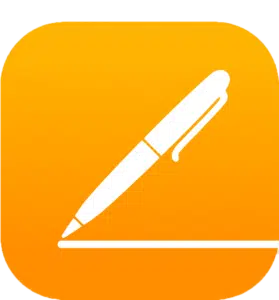To the casual observer, all job interviews are roughly the same.
That’s because, on the surface level, you only see employers evaluating applicants. But break them down into pieces and take a long hard look.
You’ll notice that recruiters use different interviewing techniques all the time. Each one helps extract the exact bits of information that they need.
What are those techniques, and how do hiring managers pick the right one? That’s what we set out to find!
What Are the Most Effective Interview Techniques?
Structured interviews in low-pressure settings can be effective in evaluating candidates. But you don’t have to limit your recruitment options.
If you want to boost efficiency, there are extra tactics, tools, and techniques to adopt.
What Are the Latest Interview Techniques?
AI-powered predictive assessments are making their way into the hiring scene.
The core concept is using tone, word choices, body language, and facial expressions to filter candidates. Even the uses of “I” and “we” in response to the common interview questions matter.
When the applicant sits down for a video interview, the AI tool picks up these parameters. Then it compares them to a dataset of successful applicants.
Since it speeds up the process, this technique works for big organizations. Think large-scale companies like Unilever.
What Are the Most Common Interview Techniques?
Using structured and behavioral guides are two of the most common techniques.
Interviewing Techniques for Interviewers
Aside from the popular approaches, recruiters can resort to other techniques, such as:
- Job trials or work samples
- Roleplay (can help gauge situational judgment!)
- Brain teasers
- Paradox questions
- Involving current employees in the interview
Interviewing Techniques for Interviewees
Most successful techniques for job candidates rely on non-verbal communication. They also use basic interview etiquette to win the interviewer’s trust and attention.
Other approaches involve using storytelling to showcase strengths and positive traits.
For instance, job seekers can use the STAR method to craft answers in a behavioral interview. The acronym breaks down into (Situation, Task, Action, and Result). Those four aspects make up the outline of the ideal answer.
The STAR method isn’t without its flaws, though.
Some people prefer the CARL (Context, Action, Results, and Learnings) framework. That’s because it helps them reflect on the takeaway at the end of their answer.
How to ACE Your Next Behavioral Interview (don’t use STAR)!
Interviewing Techniques for Research
For research purposes, use semi-structured qualitative interview guides with open-ended questions.
One key factor here is that the guide isn’t set in stone. It’s an outline with the target questions.
Researchers can shift the order as they see fit. They can even add customized questions, which some call the probe.
Interviewing Techniques for Investigators
The PEACE model is one of the most common approaches to investigative interviews.
In the 90s, psychologists and detectives developed the technique with law enforcement in mind. But it also works for human resources professionals.
If you’re looking to investigate a workplace allegation using the PEACE framework, you’ll have to:
- Plan: Review the known facts and prepare a guiding outline for the interview.
- Engage: Explain to the interviewee the allegations and what’s on the line. Rapport goes a long way in this phase.
- Account: Hear the employee’s version of events using open-ended questions and probes. Verify any new claims.
- Closure: End the interview on a positive, professional note.
- Evaluate: Take time to go over the findings to identify if you need to take disciplinary actions.
This technique works best if you avoid leading questions. It’s also better to start with the easy questions to engage the interviewee. Once the situation is no longer tense, move on to the hard stuff.
Interviewing Techniques for Managers
The STAR method works for job seekers in general. That includes candidates for management positions, too.
The main difference is that the answer should reveal the person’s management style. One example would be reflecting on how they handled difficult employees in the past.
What Are the Main Types of Interviewing?
It’s not easy choosing between the varying types of interviews. The right pick changes depending on the company’s needs, hiring scale, and the nature of the role.
1. Informational Interviewing
In informational interviews, the job seeker is the one doing all the asking.
Think of it as a conversation between an employee and someone interested in the field.
The outside party gets to explore the employee’s first-hand experience. At the end of the interview, the job seeker should be able to tell if they should pursue this line of work.
2. Screening or Online or Telephone Interview
Recruiters use screening interviews to weed out unsuitable candidates. This step narrows the pool even before the HR team moves on to the interview process.
To save time and effort, recruiters screen over the phone rather than in person.
One mistake that would disqualify an applicant right away is being dishonest. They’re out if the call reveals that they lied or embellished facts on their resume.
3. Behavioral Interview
For companies that prioritize cultural fit, the behavioral approach is a staple.
The typical behavioral interview question evokes a story from the candidate. The goal is to see how they tackle difficult situations.
From the answer, the interviewer can predict the applicant’s future on-job behavior. The best-case scenario is when the behavior matches the corporate ethos.
Does that work? So far, yes!
Behavioral interviews have a 55% predictive accuracy rate vs. 10% from traditional interviews.
Don’t fret if you’re on the other side of the interview table. Heavy research about the company and the STAR method work like a charm for this job interview type.
4. Individual Interview
One-on-one or individual interviews work for both recruitment and usability testing.
One appeal is that the format eliminates dynamics that pop up in focus groups. That’s one perk of using individual interviews in research.
In job recruitment, some people find the face-to-face setting daunting. But mock interviews help to prepare candidates for the situation.
5. Group Interview
One way to save time in the hiring process is to bring in multiple candidates at once for a group interview.
Some hiring managers include an exercise or gamified skill test.
6. Task-Oriented Interview
Task-oriented interviews echo the “try before you buy” concept.
The goal is to put the candidate’s experience to the test. This format can apply regardless of whether soft or technical skills matter most.
For instance, the hiring manager could ask the interviewee to prepare a presentation. Other roles could need a computerized skill assessment.
7. Panel Interview
The panel interview involves a group of interviewers and one candidate.
It adds 5.6–6.8 days to the process but can minimize hiring bias. That’s because the diversity within the panel helps paint a full picture of the applicant.
Group panel interviews don’t have to be standalone, either. Doing one after the candidate passes a traditional one-on-one round is common.
8. Stress Interview
Some recruiters prefer to see how candidates react to awkward situations. Stress interview formats are perfect for that, and they could call for:
- Asking perplexing questions that catch the candidate off guard
- Posing confrontational questions
- Faking disinterest
- Testing the candidate’s patience by repeating the same question
It creates an uncomfortable situation for most job seekers. But experts are divided on whether the stress interview method is worth it.
No matter what, the recruiter still has to avoid illegal interview questions.
9. Meal Interview
Scheduling an interview over lunch reveals sides of the applicant’s personality that a traditional meeting wouldn’t. It lets the employer see how the candidate behaves in casual settings.
For the job seeker, this type of interview can be nerve-racking.
That’s not a surprise since they know the employer is judging their table manners and social skills. Even how they interact with the waiting staff can make or break the interview.
The upside is that the meal interview can be good news for the applicants. Employers don’t usually go for one of those unless they’re serious about hiring someone.
What is the 80/20 Rule in Interviewing?
You might know it as the Pareto Principle or the 80/20 Rule. Either way, it offers interesting insights into the imbalance between efforts and results.
The gist of it is that you can trace 80% of the results (revenue) to 20% of the effort or causes (clients or services).
Some people use the principle in the literal sense to answer case-based interviews. That works well for business and management-related roles.
Others apply the 80/20 Rule to the prep phase before the interview.
Going by the same principle, the candidate could assume that only 20% of the questions lead to 80% of the results. The trick is identifying the questions that matter.
After that, they can focus on crafting great answers to them!
Job seekers aren’t the only ones who can benefit from the principle. Recruiters can use it to identify the 20% of the interview process that lead to 80% of the successful hires.
How to Choose an Interviewing Technique
The recruitment tactics that work for one employer might not cut it for the other. Here’s how hiring managers can find the best techniques for their needs:
1. Define Your Needs
Ask yourself what value you expect this position to add.
The duties section in the job description is a good place to start, but you’ll also need to consider cultural needs. Think of real-life scenarios that the candidate would have to navigate.
2. Define the Ideal Candidate
Take the list of needs from the previous step and use it to flesh out the criteria for the ideal candidate.
Suppose project management is a vital aspect of the role. In this case, you can note down the software that the person would need to get the job done. Don’t forget the interpersonal side!
By the end, you should have a list of the fundamental skills and qualifications.
3. Reflect on the Different Types of Interviews
Think about the best way to identify and test each point on the ideal candidate criteria.
Task-oriented interviews are a decent way to gauge technical skill levels. To weed out people with weak communication skills, consider group interview formats.
This step can get tricky if the list gathers bits from many areas of expertise. If you face a similar situation, a panel with heads from different departments could be the way to go.
4. Choose an Interviewing Technique
Reflect on the main drawback in your process and pick techniques that tackle that aspect.
For instance, if time waste is a concern, opt for video interviews. Then, you can use AI predictive assessment techniques for filtration.
If you don’t know how to incorporate a real-life scenario, add a roleplay part to the interview.
5. Outline the Interview Process
Go over the findings and see if your process of interviewing candidates is doable and smooth.
If not, break up the process into phases.
Start with phone screenings before in-person individual interviews and talent assessments. For the next round, you can use panel or meal interviews.
Frequently Asked Questions
What is the Most Popular Interview Technique?
According to TalentLyft, 74% of all HR professionals use the structured interview technique. This estimate makes it the most popular option out there.
Behavioral formats come second, with 73% preference worldwide.
What is the Most Popular Interview Technique for Interviewing Managers?
There isn’t one technique that companies favor for interviewing managers.
You can expect the popular picks to be techniques that expose the leadership style. That’s why behavioral formats and probing methods are viable options.
Wrapping Up
It doesn’t matter if you’re a job seeker or an HR member. You’re still doing yourself a disservice by believing that interviews are one-size-fits-all.
From the PEACE model to predictive analysis, there’s a sea of techniques waiting for you to explore.
The key is to identify your company’s needs and the ideal candidate first. Otherwise, the options could overwhelm you.
Don’t hesitate to leave a comment if you have questions about the popular techniques and formats!









